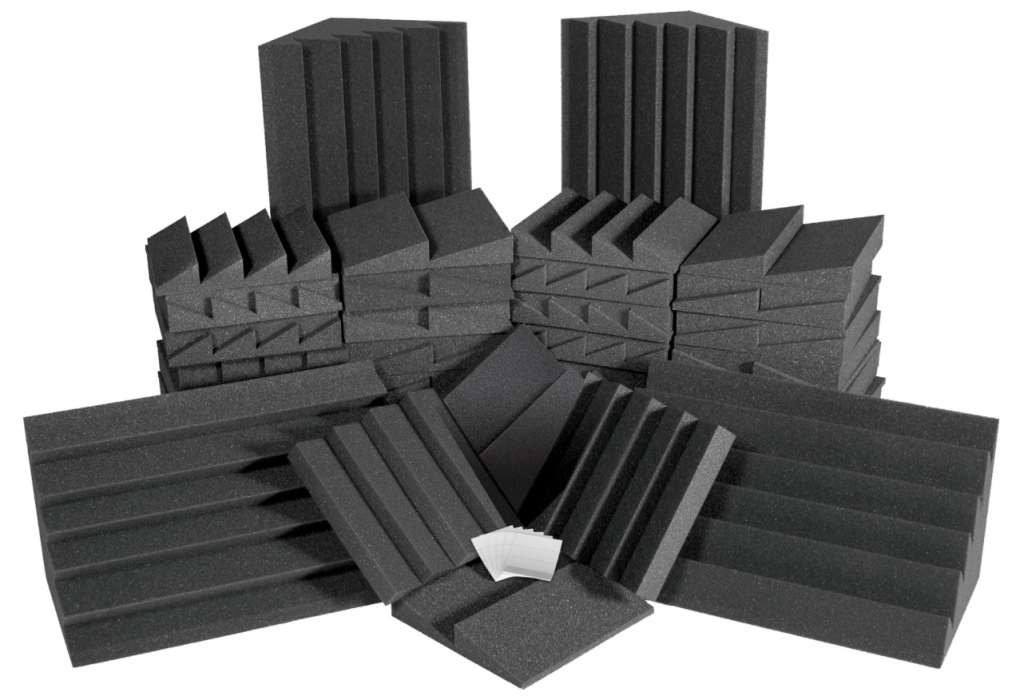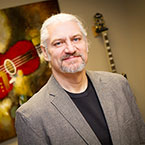
It’s a fact that most home studios are, well, in homes. And while this makes many things easier (for example, getting to the session on time), there is one thing that is inescapable — the average bedroom is not designed to have great acoustic properties.
This can be an issue if you’re using a bedroom or a small office as a mixing environment but it’s also important in the recording space. Why? Because any recordings you make of acoustic instruments or voices (essentially, whenever you have a microphone set up in a room), the resulting recordings will have, to some degree, the sonic stamp of that room. While that sonic stamp is a wonderful thing if you’re working at Sweetwater Studios, Abbey Road, or Sun, it’s not the best thing if your space sounds like a bedroom.
But let’s back up a bit: first, don’t be misled by the phrase “Vocal Booth” and think that you should put your singer in a small, boothlike space (like a bathroom or closet); while you might have to do this if there’s no other place to put that singer or musician, all things considered, it’ll generally be better to use a larger room than a small one. A full description of the physics behind room nodes and standing waves are a bit beyond the scope of this article but suffice it to say that the larger the room, the less likely that the frequency range of the singer or musician will be adversely impacted by the room’s primary resonant frequencies.
To get a feeling for how your recording space sounds, simply go into the room and clap your hands. The room shouldn’t be dead sounding (for comparison, step into a closet filled with clothes and clap; that’s a dead sound), but you shouldn’t hear any flutter echo, the distinctive ringing or rattling sound caused by sound waves bouncing back and forth between hard, parallel surfaces. A little natural reverb in the room is a good thing — but too much, and you may have issues. See if you can find different spots in the room that sound different. For example, do you hear flutter echo when you clap your hands in the exact center of the room? Try vocalizing (don’t worry, no one is listening); do some notes jump out at you when you’re in the center? What if you move closer to one of the walls? What about moving toward a corner? With a little experimentation, you’ll find the sweet spot in your room. Make a note of that spot, and use it.
Have you found that you’ve recorded live tracks in your room that have a muddy, dull sound with no sparkle or “air” in the track? This is generally caused by the wrong type of absorption. Ever seen a photograph of a 1950s recording studio or radio station that has empty egg crates stapled to the walls? The idea was that it would deaden the space and make the recordings (or the broadcast) sound better. It didn’t work then and it doesn’t work now.
The problem is that while such treatment can (to some extent) absorb high frequencies, it does nothing for either mids or lows. When the highs are absorbed, what’s left in the room are those mid and low frequencies — not the optimal solution, as the lack of these frequencies in the track will leave you with the dull, muddy sound that you don’t want. This is why real acoustic treatment materials are so valuable; they’re more “broadband” in absorption and can help maintain even response in the room after it’s been treated.
Reflections are typically more audible in the high mid and high frequencies, and are caused by sound bouncing between two parallel, reflective surfaces. These surfaces can be two walls, but they can also be the floor and ceiling of a room. The idea is to break up those parallel surfaces and thus prevent audible reflections. Two approaches can help to tame reflections, especially flutter echo. The first is absorption. Hang acoustic panels on one of the parallel surfaces to break up those parallel surfaces. Another is diffusion; diffusors don’t absorb sound, they scatter it in different directions. A number of companies make diffusors, and they work quite well.
But a key — and often overlooked problem — is the low frequency range, where there can be massive peaks and dips in the room’s response. Bass traps are the tools for treating this. It’s almost impossible to over-treat the low-frequency range in a room. This is definitely one case where more is almost always better than less.
There are many great resources out there for learning about acoustics and studio design. (I’ll refer you to my earlier shameless plug for one that I personally think is pretty good…) What are you waiting for? Start treating your room now; add some panels, some trapping, then give it a listen and record some tracks. Maybe you need to move the treatments around or add additional treatments. Rinse, repeat, rinse, repeat. When your room sounds like you want it to sound, you’re done! Except for a little paint, a few flowers and a couple of throw pillows…



